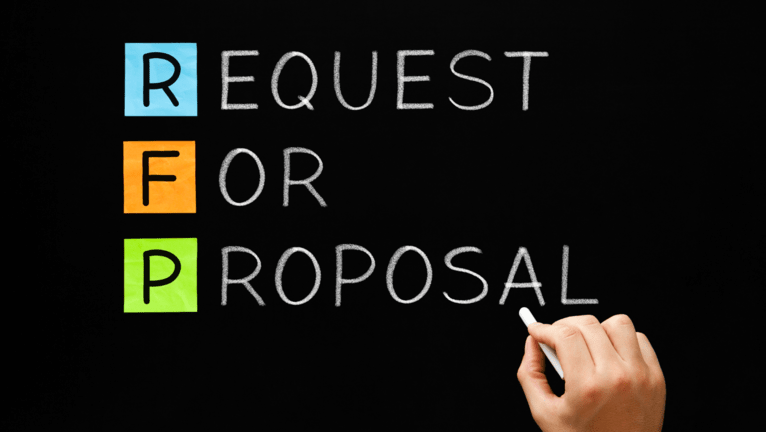RFP Meaning
Do you wonder what RFP's meaning is? RFP stands for Request for Proposal, a formal business document edited in questionnaire style issued publicly to announce projects, ask for bids, or give details to companies or vendors (interested parties).

Contents
What is an RFP?
Companies issue an RFP when they choose a service provider or vendor to work with.
Most of the time, companies and Government agencies use a request for proposal (RFP) to explain a particular project's goals and purpose. This can be done by creating a list of requirements, criteria, terms and conditions, and the bidding process.
RFPs open un competition and remove all forms of bias in the selection process.
Here’s what you need to know about RFPs:
- RFPs are used by government agencies and also by many private organizations and companies.
- A request for proposal is a project announcement made publicly by organizations indicating that they are seeking bids for contractors to complete the project.
- The RFP defines the project (both for the company that issued it and for the companies that will respond to it). Moreover, the request for proposal describes the project and its goal, and the organization that posts it outlines the contract terms and the bidding process.
Benefits of an RFP
In some ways, an RFP can be considered an advertisement, as it announces that a project is proceeding and invites qualified candidates to get the job done.
Government agencies have adopted RFPs to eliminate cronyism as a factor in rewarding project contracts.
An RFP also opens up the process to competition, which is known to keep projects at lower costs.
RFP alternatives are represented by less formal processes requiring a project manager and identifying potential vendors for a particular project. These alternatives can be exhaustive, and the number of potential vendors can be limited. In conclusion, issuing the RFP can save time and money, as you receive vendors' proposals directly.
How to write an RFP?
- Define the project
- Mention the purpose
- Add the budget
- Provide introductory information and background
- Describe what services the project needs
- Detail the timelines and your evaluation criteria
- Proofread the RFP and post it.

RFP vs. RFQ
RFP and RFQ (request for quotation) are slightly different, RFQ being just the quote for the project. As opposed to a request for proposal, an RFQ is a request for quotation.
As mentioned before, an RFP includes the price quote, among other specifications, while the RFQ doesn’t include anything other than the price.
Here’s how to differentiate the two terms:
While in an RFP, you are receiving a quote, you will receive other information, too. The table of contents includes the evaluation criteria, requests for qualifications for those responding to the RFPS deliverable schedule, the timeline of completion, or the list of services provided. On the other hand, with an RFQ, you’re only getting the quote for the product/service you want to buy.
RFP vs. RFI (request for information)
An RFI - a request for information - is a solicitation to suppliers for information on the services and products they provide. A request for information can be used to gather data for a supplier’s database, to have it available in the future.
Understanding an RFP
Most of the time, RFPs are used for complex projects that require more sub-contractors. Issuing and RFPs means to describe the organization, the purpose of the projects, the evaluation criteria, outline the contract terms and conditions, and the bidding process too.
Some RFPs are issued by government agencies and organizations in the public sector. However, any private or public organization may issue RFPs to get a variety of perspectives on the project and multiple bids.
References
TechTargget, Request for proposal (RFP) , https://www.techtarget.com/searchitchannel/definition/request-for-proposal